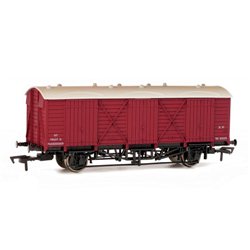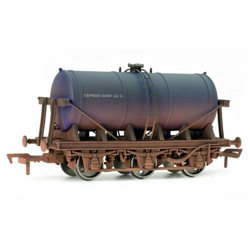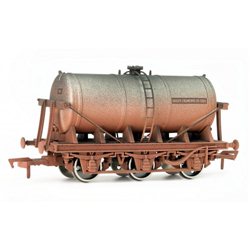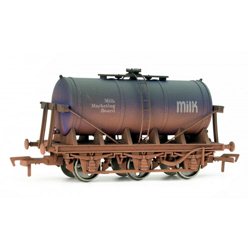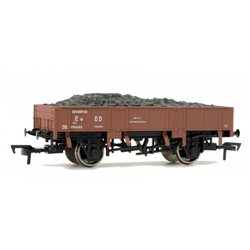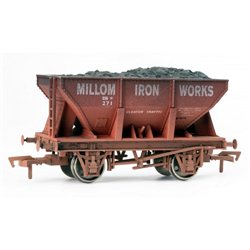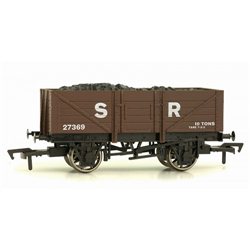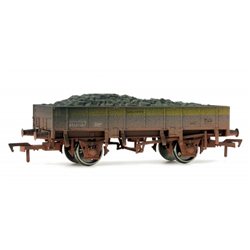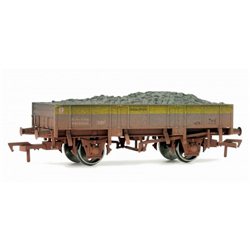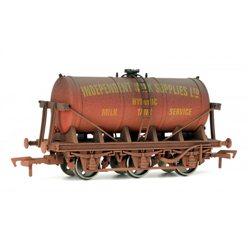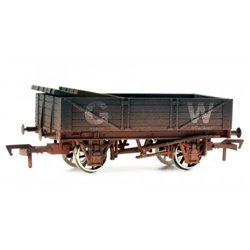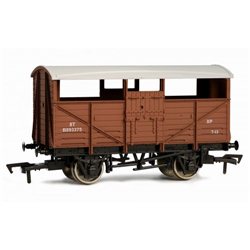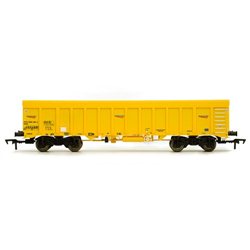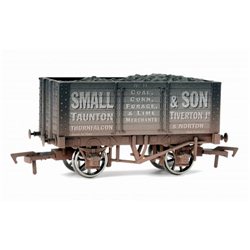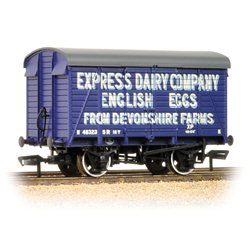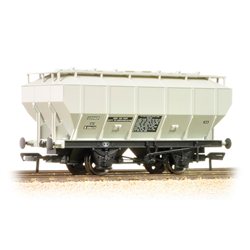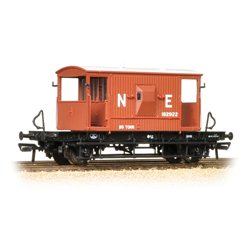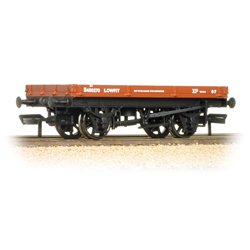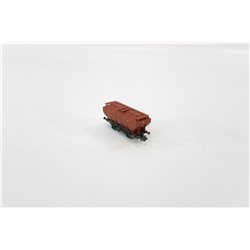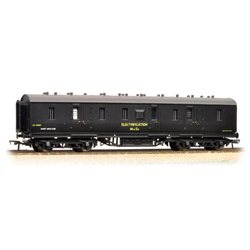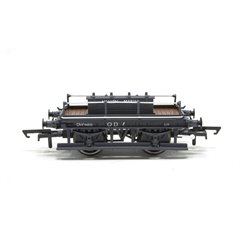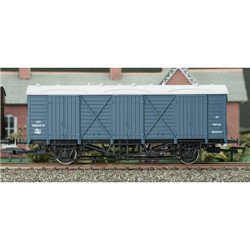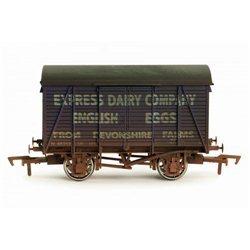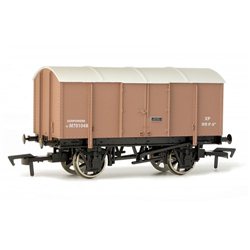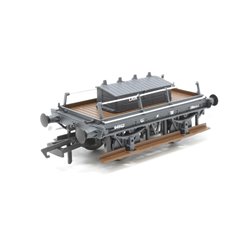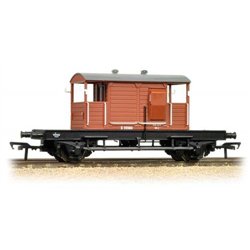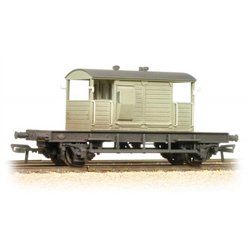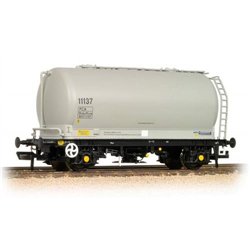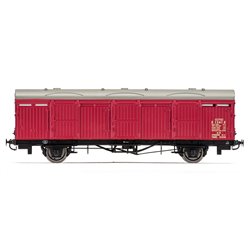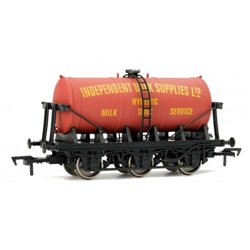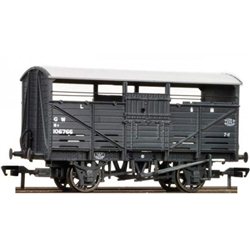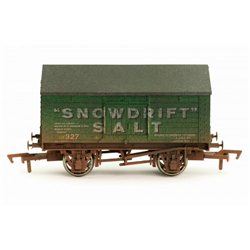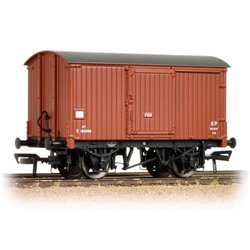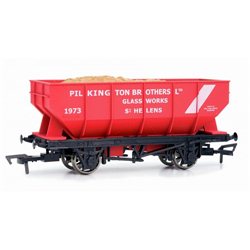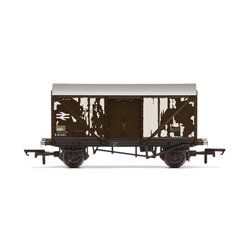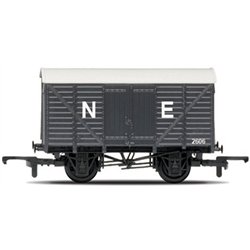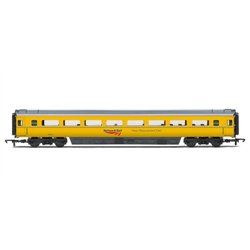Applying a camber to a tight curve of track on your model railway layout can help improve the realism and operation...
No products
Valid to UK only - excludes oversized items
Product successfully added to your shopping cart
There are 0 items in your cart. There is 1 item in your cart.
Valid to UK only - excludes oversized items
Search Tips
Open on Good Friday
The shop will be open on Friday 18th April.
Bring us some chocolate!
Wagons - ready made [OO]There are 651 products.
Fruit D Van BR 2023
4F-014-003
DapolScale: OO (1/76)Fruit D wagons were large ventilated wooden bodied vans designed for the fast and efficient transportation of fruit.
£ 17.80Out of stock6 Wheel Milk Tank Express Dairy Weathered
4F-031-010
DapolScale: OO (1/76)The 6 wheel milk tanker was developed in the 1930’s from the 4 wheel milk tanker.
£ 18.99Out of stock6 Wheel Milk Tank Unigate Silver Weathered
4F-031-004
DapolScale: OO (1/76)The 6 wheel milk tanker was developed in the 1930’s from the 4 wheel milk tanker.
£ 15.40Out of stock6 Wheel Milk Tank MWB Weathered
4F-031-006
DapolScale: OO (1/76)The 6 wheel milk tanker was developed in the 1930’s from the 4 wheel milk tanker.
£ 18.99Out of stockGrampus BR
4F-060-001
DapolScale: OO (1/76)The grampus wagon was the principal open wagon for the engineering departments of BR from the early 1950’s to the early 1980’s. The wagons’ design itself was extremely versatile with drop down sides and removable end planks.
£ 16.50Out of stock24 Ton Steel Ore Millom Iron Works Weathered
4F-033-006
DapolScale: OO (1/76)The 24 ton steel ore hopper was originally designed and produced by Charles Roberts of Wakefield in the early 1930’s and was extensively copied by other manufacturers from this time.
£ 12.90Out of stock5 Plank Wagon 10' Wheelbase SR 27369
4F-051-011
DapolScale: OO (1/76)The 5 Plank Wagon was one of the most common general good wagon built with tens of thousands being manufactured by the rail companies between 1910 and the early 1930’s..
£ 10.95Out of stockGrampus Dutch Livery D8981487 Weathered
4F-060-006
DapolScale: OO (1/76)The grampus wagon was the principal open wagon for the engineering departments of BR from the early 1950’s to the early 1980’s. The wagons’ design itself was extremely versatile with drop down sides and removable end planks.
£ 17.60Out of stockGrampus Dutch Livery D988546 Weathered
4F-060-004
DapolScale: OO (1/76)The grampus wagon was the principal open wagon for the engineering departments of BR from the early 1950’s to the early 1980’s. The wagons’ design itself was extremely versatile with drop down sides and removable end planks.
£ 19.70Out of stock6 Wheel Milk Tank IMS Weathered
4F-031-008
DapolScale: OO (1/76)The 6 wheel milk tanker was developed in the 1930’s from the 4 wheel milk tanker.
£ 16.99Out of stock6 Wheel Milk Tank Independent Milk
4F-031-012
DapolScale: OO (1/76)The 6 wheel milk tanker was developed in the 1930’s from the 4 wheel milk tanker.
£ 19.00Out of stock6 Wheel Milk Tanker Unigate Silver 70346 Weathered
4F-031-014
DapolScale: OO (1/76)The 6 wheel milk tanker was developed in the 1930’s from the 4 wheel milk tanker.
£ 16.00Out of stock6 Wheel Milk Tank SR United Dairy
4F-031-002
DapolScale: OO (1/76)The 6 wheel milk tanker was developed in the 1930’s from the 4 wheel milk tanker.
£ 18.99Out of stock4 Plank Wagon GWR 45506 Weathered
4F-040-006
DapolScale: OO (1/76)The 4 Plank Wagon was built by the GWR in the early 1900’s.to determine which design would make the best general purpose open wagon.
£ 12.40Out of stockCattle Wagon BR B893375
4F-020-005
DapolScale: OO (1/76)Cattle wagons were made in large numbers and were a common sight on rail in all parts of the country until their use was eclipsed by the use of specialised road vehicles.
£ 11.25Out of stockIOA Network Rail Ballast Wagon 3170 5992 065-6
4F-045-003
DapolScale: OO (1/76)The Romanian built IOA wagon is a type of high sided open wagon designed to carry ballast and spoil.
£ 22.60Out of stock7 Plank Wagon Small & Son 9' Wheelbase Weathered
4F-072-004
DapolScale: OO (1/76)The 7 plank wagon was the standard coal wagon up to the 1930’s when steel mineral wagons were developed. In 1923 the RCH produced a standard plan for the 7 plank wagon, as up to this time there were many variations depending on the builder and region.
£ 14.20Out of stock12 Ton Southern Planked Ventilated Van Express Dairies Eggs
38-072
BachmannScale: OO (1/76)12 Ton Southern Planked Ventilated Van Express Dairies Eggs
£ 16.95Out of stockCovhop Wagon 'Soda Ash' Light Grey
38-501
BachmannScale: OO (1/76)Covhop Wagon 'Soda Ash' Light Grey
£ 22.95Out of stockTriple Pack 16 Ton Steel Mineral Wagons NCB Grey Weathered
37-236
BachmannScale: OO (1/76)Triple Pack 16 Ton Steel Mineral Wagons NCB Grey Weathered
£ 44.95Out of stock20 Ton Brake Van LNER Oxide
37-529A
BachmannScale: OO (1/76)20 Ton Brake Van LNER Oxide
£ 23.95Out of stock1 Plank Wagon BR Bauxite (Late)
37-479
BachmannScale: OO (1/76)1 Plank Wagon BR Bauxite (Late)
£ 11.95Out of stockBR (ex-LNER) extra long CCT van E1319E
R6683B
HornbyScale: OO (1/76)BR (ex-LNER) extra long CCT van E1319E
£ 21.99In stock4 plank wagon 'Penwyllt Silica Works'
R6668
Hornby4 plank wagon 'Penwyllt Silica Works' Length 88mm
£ 10.25Out of stockCovered Hopper Wagon BR Bauxite
377-765
Graham FarishCovered Hopper Wagon BR Bauxite
£ 17.95In stock50ft. Ex-LMS PIII BG Van BR Dept. Black Electrification
34-330
BachmannScale: OO (1/76)50ft. Ex-LMS PIII BG Van BR Dept. Black Electrification
£ 26.95Out of stockBR Shunters Truck (Cheltenham)
R6643B
HornbyBR Shunters Truck (Cheltenham) Entered Service: 1940sDimensions: L: 68mmLivery: BRFinish: Pristine
£ 10.95Out of stockBR Shunters Truck (Hallen Marsh)
R6643C
HornbyBR Shunters Truck (Hallen Marsh)
£ 10.95Out of stockFruit D Van Blue W38107
4F-014-007
DapolScale: OO (1/76)Fruit D wagons were large ventilated wooden bodied vans designed for the fast and efficient transportation of fruit.
£ 19.40Out of stockBox Van Devonshire Eggs Weathered
4F-021-101
DapolScale: OO (1/76)Box Vans were the workhorses of the early freight industry moving general merchandise and perishable goods and thousands were built over several designs and over a large time period.
£ 12.20Out of stockGunpowder Van BR
4F-013-009
DapolScale: OO (1/76)Gunpowder vans were especially constructed vans designed for the safer transport of gunpowder and other potentially explosive substances.
£ 11.20Out of stockGunpowder Van LNWR
4F-013-003
DapolScale: OO (1/76)Gunpowder vans were especially constructed vans designed for the safer transport of gunpowder and other potentially explosive substances.
£ 11.20Out of stockGWR Shunters Truck (Laira Truro Goods)
R6642B
HornbyGWR Shunters Truck (Laira Truro Goods) Entered Service: 1917Dimensions: L: 68mmLivery: GWRFinish: Pristine
£ 10.95Out of stockSR 25 Ton Pill Box Brake Van BR Bauxite
38-402A
BachmannScale: OO (1/76)SR 25 Ton Pill Box Brake Van BR Bauxite
£ 23.95Out of stockSR 25 Ton Pill Box Brake Van BR Grey Weathered
38-401A
BachmannScale: OO (1/76)SR 25 Ton Pill Box Brake Van BR Grey Weathered
£ 24.95Out of stockPCA Metalair Bulk Powder Wagon Grey Weathered
38-652
BachmannScale: OO (1/76)PCA Metalair Bulk Powder Wagon Grey Weathered
£ 17.95Out of stockPCA Metalair Bulk Powder Wagon Grey
38-651
BachmannScale: OO (1/76)PCA Metalair Bulk Powder Wagon Grey
£ 16.95Out of stockExtra-long CCT van A in BR maroon - E1341E
R6683
HornbyScale: OO (1/76)Extra-long CCT van A in BR maroon - E1341E
£ 21.99Out of stock6 Wheel Milk Tank Independent Milk Supplies
4F-031-011
DapolScale: OO (1/76)The 6 wheel milk tanker was developed in the 1930’s from the 4 wheel milk tanker.
£ 17.90Out of stock16 Ton Steel Mineral Wagon BR Bauxite Weathered
4F-030-002
DapolScale: OO (1/76)£ 11.75Out of stock8 Ton Cattle Wagon GWR Dark Grey
37-711C
Graham FarishScale: OO (1/76)BR standard 8 Ton Cattle wagon - Dark grey
£ 15.95Out of stockSalt Van Snowdrif Weathered
4F-018-012
DapolScale: OO (1/76)The efficient movement of salt was fundamental to the growth of Britain as an industrial nation. Salt was transported from the main mining areas in Cheshire, Lancashire, Yorkshire and the West Midlands in especially constructed salt vans.
£ 12.00Out of stock12 Ton Fish Van BR Bauxite (Early)
38-576
BachmannScale: OO (1/76)12 Ton Fish Van BR Bauxite (Early)
£ 13.95Out of stock21 Ton Hopper Pilkington
4F-034-019
DapolScale: OO (1/76)On nationalisation, the newly formed BR inherited a vast assortment of rolling stock designed to carry coal.
£ 11.40Out of stockNETWORK RAIL EX STD 475814 MK3
R4641
HornbyScale: OO (1/76)NETWORK RAIL EX STD 475814 MK3
£ 28.50Out of stockNETWORK RAIL EX TGS 977993
R4637
HornbyScale: OO (1/76)NETWORK RAIL EX TGS 977993
£ 28.50Out of stock






